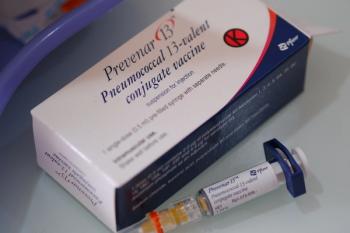
- Drug Topics October 2023
- Volume 167
- Issue 09
Examining Vitamin D Pharmacokinetics in Children With Asthma, Obesity
Although vitamin D supplementation is a low-cost treatment option, the optimal dosing strategy is currently unknown.
Vitamin D is an essential nutrient critical for maintaining calcium absorption and bone health in children. In addition, low levels have been associated with the development of numerous extraskeletal diseases such as allergies, respiratory illnesses, and obesity.1
Insufficient vitamin D concentrations have been shown to contribute to higher rates of asthma exacerbations, a common chronic illness in children. Patients with asthma who are obese typically have increased asthma symptoms. Supplementation with vitamin D is a low-cost treatment option, but the optimal dosing regimen is currently unknown.2
Investigators set out to describe the pharmacokinetics of oral Vitamin D in children with asthma. Results of the study (VDORA; NCT03686150) were published in Clinical Pharmacokinetics.2
“Studies of vitamin D supplementation in adults with overweight/obesity have demonstrated decreased bioavailability, which was attributed to increased serum [vitamin D] 25(OH)D deposition in body fat,” the authors wrote. “Studies are lacking that describe the pharmacokinetics of vitamin D supplementation in children with overweight/obesity.”2
Investigators conducted a multicenter, randomized, open-label, oral supplementation study to describe the pharmacokinetics of vitamin D in children aged 6 to 17 years who have asthma and were overweight/ obese with serum 25(OH)D concentrations between 10 and 30 ng/mL.2
The first part of the study assessed how 4 dosing regimens over 16 weeks were able to achieve 25(OH)D concentrations greater than 40 ng/mL. These results were used to create a model that performed simulations. In part 2 of the study, the optimal dosing regimen from part 1 was compared with the current standard of care of 600 daily IU over 16 weeks. A final model was then created using both parts to determine important covariates in the pharmacokinetics of vitamin D.2
Investigators found that a loading dose of 50,000 IU, combined with a daily dose of 8000 IU, was sufficient to raise 25(OH)D concentrations above 40 ng/mL in most of the participants without going over more than 100 ng/mL. The study also found that a loading dose of 50,000 IU led to faster 25(OH)D concentrations above 40 ng/mL.2
Additionally, the investigators found that a higher body mass index was associated with reduced 25(OH)D half-life, indicating that children who are severely obese may need higher daily doses of vitamin D to achieve concentrations above 40 ng/mL.2
Study limitations included not collecting factors that affect free “bioavailable” vitamin D, not collecting pharmacogenetics of vitamin D metabolism genes, and not including geographic latitude, which can affect endogenous vitamin D production, the investigators noted.2
“While this study focused on children with asthma and overweight/ obesity, a better understanding of vitamin D pharmacokinetics in children with overweight/obesity will be clinically useful for many pediatric disorders,” Lang et al concluded.2
References
1. Chen Z, Lv X, Hu W, Qian X, Wu T, Zhu Y. Vitamin D status and its influence on the health of preschool children in Hangzhou. Front Public Health. 2021;9:675403. doi:10.3389/fpubh.2021.675403
2. Lang JE, Ramirez RG, Balevic S, et al. Pharmacokinetics of oral vitamin D in children with obesity and asthma. Clin Pharmacokinet. Published online August 30, 2023. doi:10.1007/s40262-023-01285-9
Articles in this issue
about 2 years ago
Preventing Severe Respiratory Infections in Childrenabout 2 years ago
Pediatric T1D Management Adherence System Evaluatedabout 2 years ago
The ABCs of CBD: Cannabinoids in Dermatology and Skin Careabout 2 years ago
Quizartinib Approved for Newly Diagnosed AML in Patients with ITDabout 2 years ago
Sickle Cell Disease Finally Getting Its Dueabout 2 years ago
Vitamin Supplementation May Help Reduce Endometriosis Related Painabout 2 years ago
Celebrating Women in Pharmacyabout 2 years ago
Biosimilars Are Bringing Affordability and AccessibilityNewsletter
Pharmacy practice is always changing. Stay ahead of the curve with the Drug Topics newsletter and get the latest drug information, industry trends, and patient care tips.

















































































































